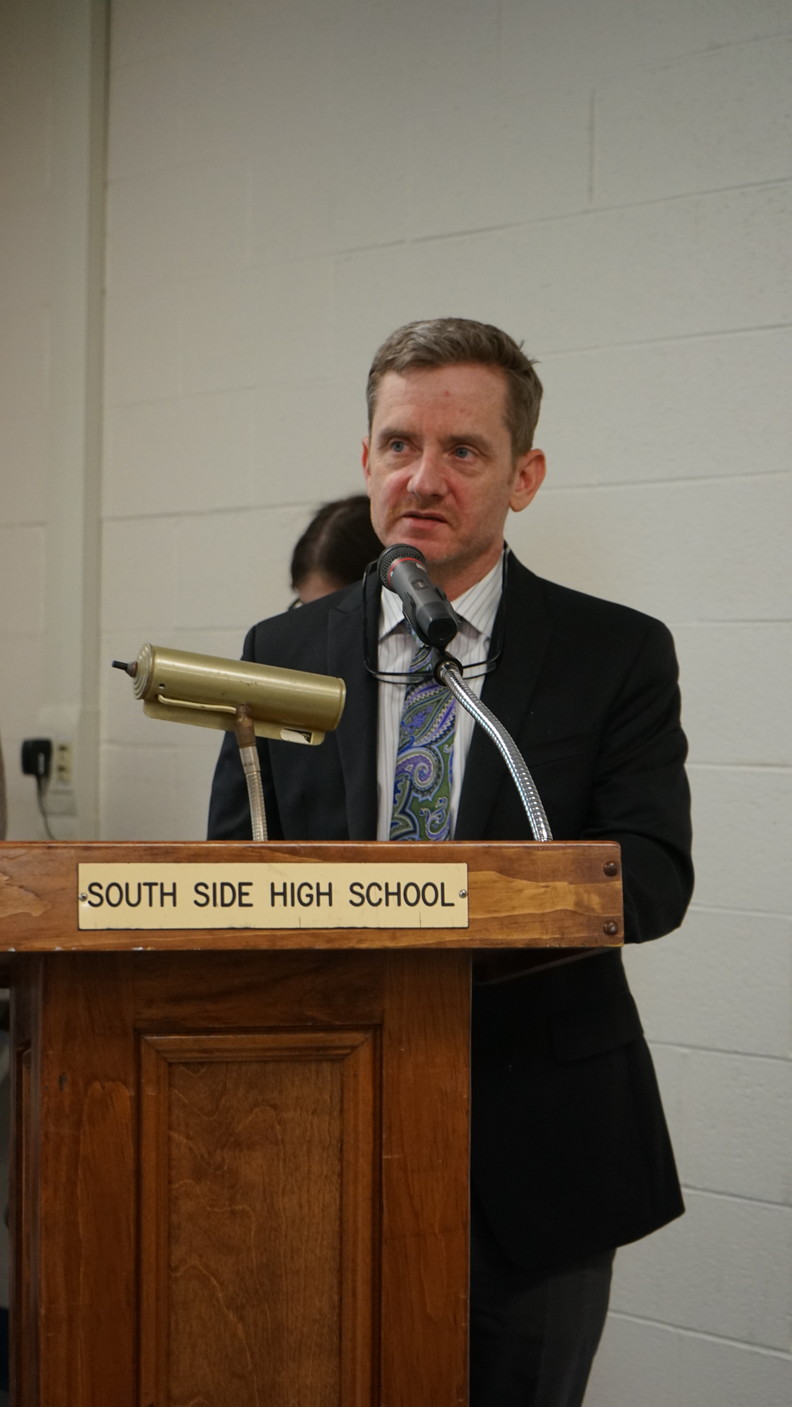School officials sound off on state geometry Regents
Less than 80 percent of SSHS students pass exam this year
Fewer than 80 percent of the South Side High School students who took the state geometry Regents on June 16 passed the exam, which Superintendent Dr. William Johnson said is not consistent with student performance throughout the school year.
The exam’s pass rate is out of line, according to Johnson, with that of the algebra and algebra 2 Regents, which had passing rates of about 97 percent and 90 percent, respectively.
“The questions are misleading, poorly written and very much laden with unnecessary linguistic concepts that cause confusion in how to respond,” Johnson said of the geometry exam, “They made a mistake again. … The scores do not reflect what kids know.”
Johnson has been an outspoken critic of the Common Core curriculum in the past, and about 60 percent of Rockville Centre’s third- through eighth-graders sat for neither the English Language Arts nor the math assessments this year. High school students, however, must take Regents exams as part of their graduation requirements.
The geometry Regents, first implemented as a Common Core exam for the 2015-16 school year, comprised 24 multiple-choice questions and 12 others that required more expansive responses. After the test was administered, the State Education Department posted a notice on its website about questions 14 and 22. “As a result of discrepancies in the wording, questions 14 and 22 do not have only one clear and correct answer,” it stated.
Because of this, according to the notice, two choices were accepted as correct answers for question 14, and all students were awarded credit for question 22, regardless of the answer selected.
“We’ve always been a district and a math department that’s prided itself on external standards and accountability, but the test no longer is accurate or serves a purpose in regards to either of those,” South Side Principal John Murphy said, adding that the state’s revised conversion chart — with lower cutoff scores and higher marks needed to achieve mastery level — has not fixed the problem.
“An exam shouldn’t bring groups of students to tears, and that was the experience with this geometry Regents — yet again,” he continued. “It’s taking students and pushing them away from math, especially highly motivated students — who have excellent teachers — who, as a result of the last three years, no longer self-identify as math students. That’s the crime.”
Michael Casamassima, who has taught geometry classes comprising mostly of ninth-graders at South Side for the last four years, said the state upped the rigor when implementing exams two years ago by focusing more on getting students to apply concepts.
Though encouraging them to think outside the box is good, according to Casamassima, the style of questioning on the exam sometimes leads to confusion. Questions like 14 and 22 that had to be corrected, he said, adds to the stress and anxiety of his students, which, he noted, is already higher than in the past.
“It’s very upsetting, because they want to do well, and in today’s world, with college admissions, it’s a high-stress, high-stakes atmosphere, especially with how much testing is stressed,” Casamassima said. “And the kids definitely feel it.”
Perhaps his biggest qualm about the exam, though, was question 27, which asked students to use Cavalieri’s Principle to explain why the volumes of two triangular prisms were equal.
In the midst of criticism of Common Core exams, and parents opting their children out of lower-level English and math exams statewide, the State Education Department last September released a new draft of learning standard recommendations for the 2018-19 school year, and subsequently solicited public comments on them. “Upon discussion with the ‘plus standard’ group, the informal limit arguments and Cavalieri’s [Principles] are part of integral calculus, and not appropriate at this level,” the document states.
“There are standards that are deemed inappropriate for the age group … yet they showed up on the Regents exam,” Casamassima said. “So one of my main questions for the Board of Regents is; ‘If it’s inappropriate in two years, why is it appropriate to be tested on the Regents now?”
The State Education department did not address the Herald’s requests for comment on question 27 or the criticism that the test has stirred around the state, simply pointing to the notice about questions 14 and 22 and a document detailing the development process of the exams, which includes field tests, teacher and administrator evaluations, and other steps before publication.
“All NYS exams are developed in accordance with national industry and professional standards for educational testing,” the department’s website says. “Exams are carefully constructed to align with and assess the knowledge and skills set forth in the NYS learning standards.”
At the Rockville Centre Board of Education’s public works session on June 20, Johnson noted that parents have contacted the district to express dissatisfaction with the test based on reports from their children. Murphy agreed that “parents are enraged, and rightfully so,” and told the Herald that the district has contacted the state about the exam.
“It’s sad to say, in the area of math,” Johnson said, “that this state continues to shoot itself in the foot.”

 62.0°,
Partly Cloudy
62.0°,
Partly Cloudy 




